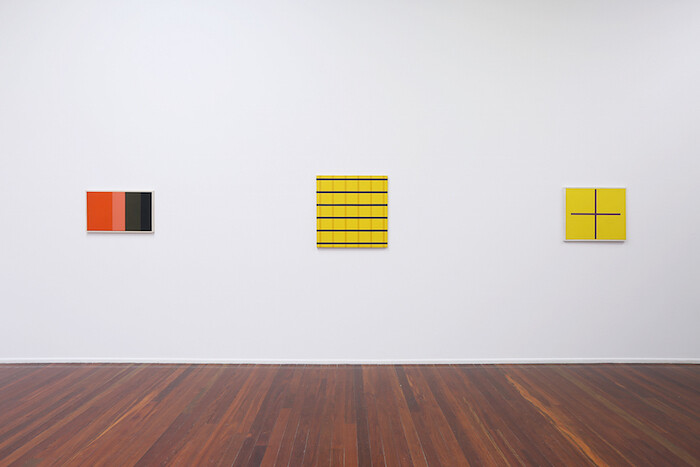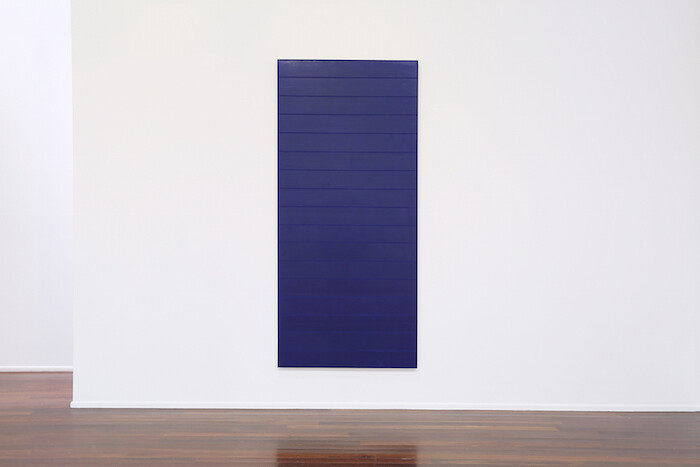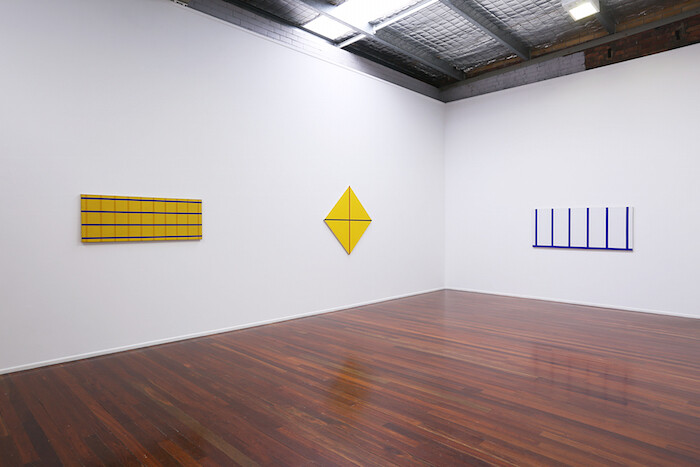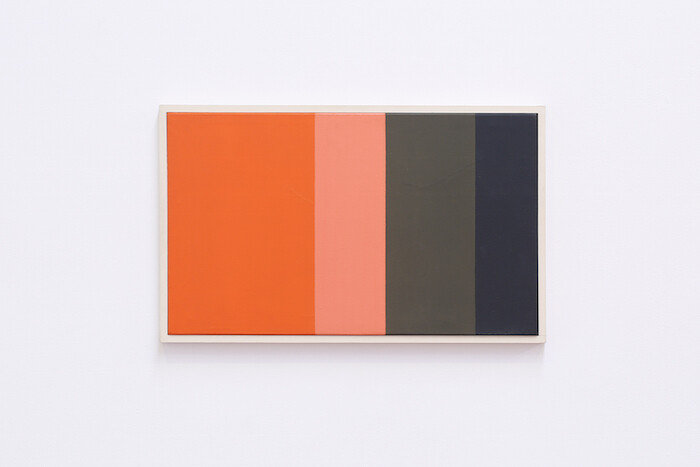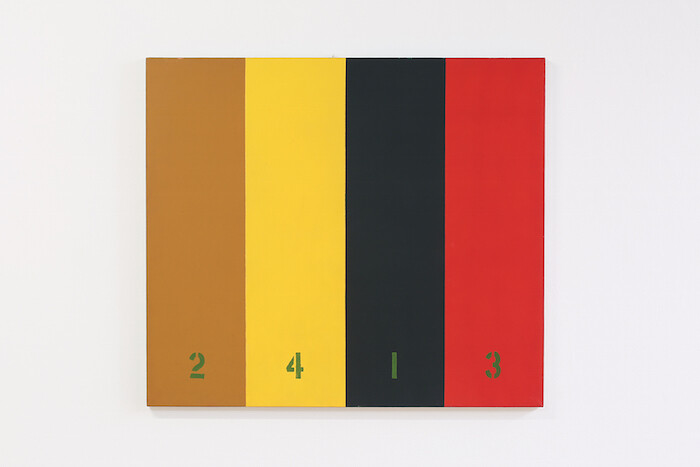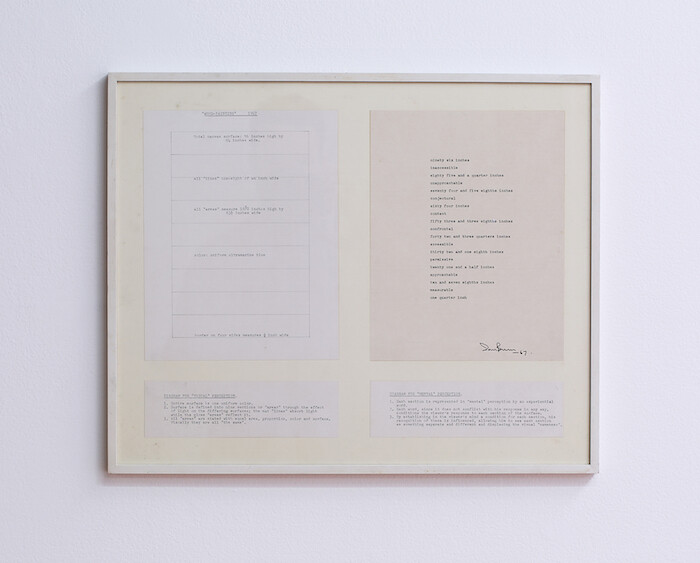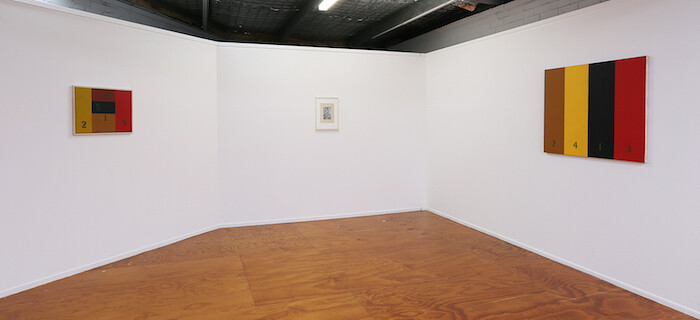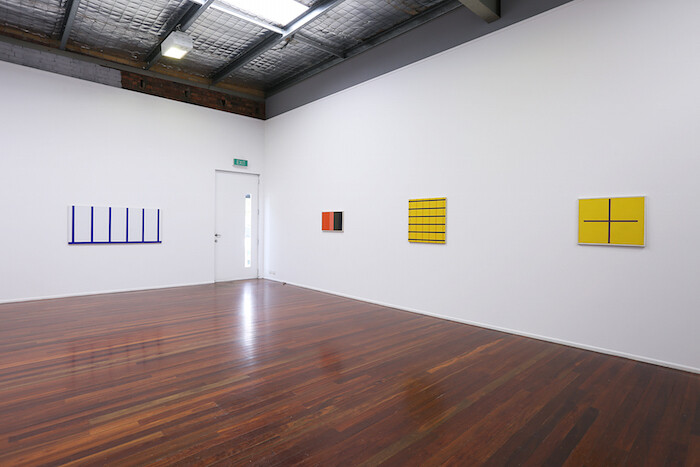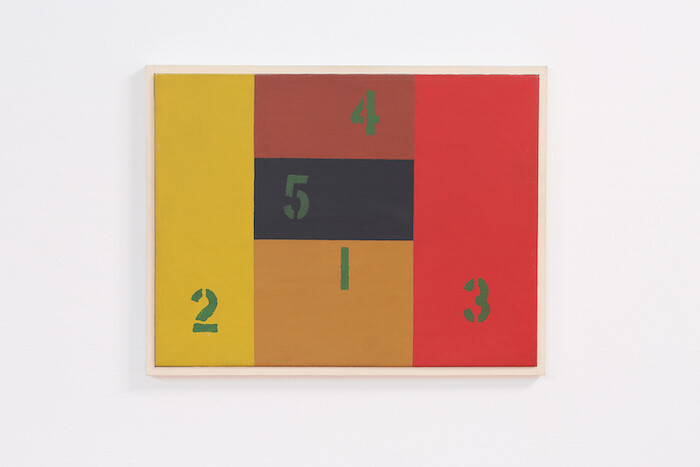Two paintings in Ian Burn’s “London Works” frame the exhibition’s two-year time span, 1965 to 1967—a transformative and immensely productive period in the practice of the Australian conceptual artist, best known as a member of the group Art & Language. Together, these paintings tell a story of oscillation and negotiation between the signifiers and styles of two art worlds: 1960s Melbourne and 1960s London. Burn painted the first before he left Melbourne for London and the second just as he was about to depart London for New York. Figures and Flag, St Kilda (1964) is a Paul Klee-inspired work, featuring playfully scattered thick black lines that recall those painted by the German artist in the early twentieth century, highlighted with fleshy pinks and cool blues that bring to mind seabirds, bare bottoms, and other seaside charms, set in a mustard-yellow field. The painting can be read as abstract, but hints of an outside world persist. This picture also bears the influence of Melbourne’s “Heide Circle,” a group of modernist painters that included artists such as the ostentatious Sidney Nolan, whose Ned Kelly series is a national icon, painted with the black, blues, and ochre later used by Burn. The second work, demonstrating Burn’s rejection of representation in favor of pure abstraction, is one of his Blue Reflex works (1967-8), a high-gloss monochrome panel. Reflecting its environment and its audiences, Blue Reflex brings part of the outside world back into the painting.
It was during this two-year period that the artist made Blue Premiss (1966), a large, vertical, rectangular painting that is the focal point of the first of two gallery spaces at Milani Gallery. Its under-layer is a slightly more purple in tone than International Klein Blue but has the same illusion of depth. Overtop, a series of horizontal strips approximately five inches wide are painted in a translucent film, forming murky bands of muddled and slightly reflective textures. Each stripe varies in its width, creating an unstable surface that fluctuates as you look up and down.
A small work from the series “Left to Right Paintings” (1965) tests the assumption that Westerners read canvases like pages of a book, left to right. The painting is structured as a series of vertical bands of varied width and color—red, coral, gray, black. The bright red draws the eye to the left first, but the harsh black band to its right competitively draws attention to itself before giving its audience the time to let the subtlety of the coral and gray sink in. The picture reads left, right, right, left. The work is an indication of the kinds of experiments in perception that Burn carried out in London in the 1960s, a number of compelling examples of which are hung on the second level of the gallery. Left to Right Painting (1965) also gives some context for the geometric abstractions in the room which also play with legibility and form, but equally evidence Burn’s newfound appreciation for artists such as Frank Stella, whose exhibition he saw in London in the same period. Stella’s influence is evident in Burn’s use of pure vibrant colors and shaped canvases, such as the diamond form of his lemony-yellow Lozenge (1965) that is crossed from left to right by a sharp thin line in royal purple and from top to bottom in red.
On the upper level hang a selection of works that, like the Left to Right Painting, experiment with the legibility of painting. Re-ordered Painting No. 3 (1965) creates a game-like structure to test the eye: four vertical stripes of brown, ochre, black, and red form a rectangular painting. Each segment is then numbered: brown is two although it comes first; ochre, which follows brown, is actually four; black is one; red is three. Burn suggests that the order in which you will see the colors is black, brown, red, ochre, despite the fact that they appear in another arrangement from left to right. In Word Painting (1967), Burn does away with pigment altogether and offers a carefully structured, typewritten description of a painting on standard sheets of white paper. The work tests the need for visual perception of pigment on canvas at all in the experience of a painting. This kind of experimentation points to the considerable doubt and productive questioning in Burn’s practice during this two-year period, in which he challenged the structure, intelligibility, and materials that constitute painting, creating a linguistic field in which his experiments in painting could unfold.
